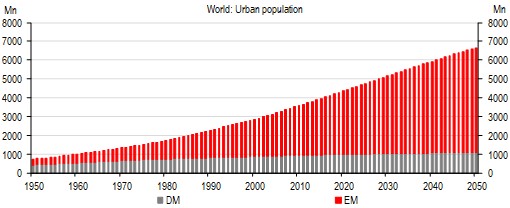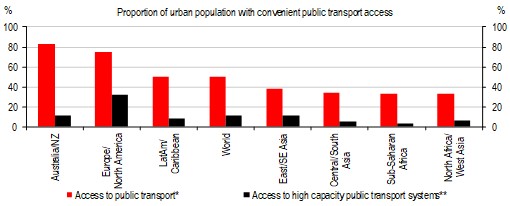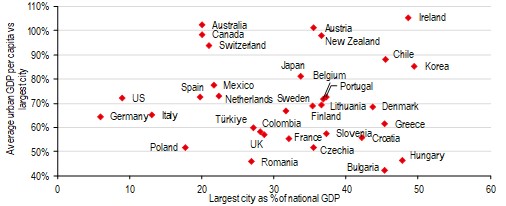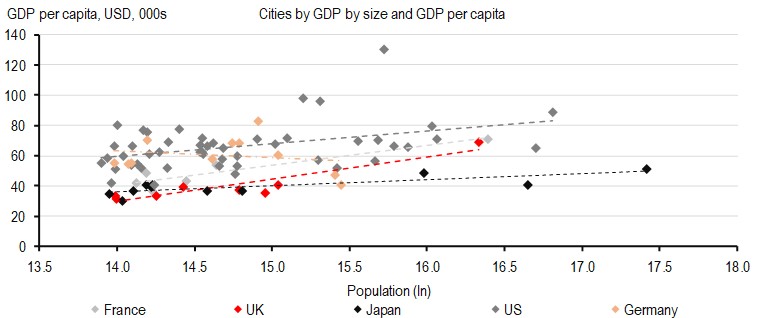- Article
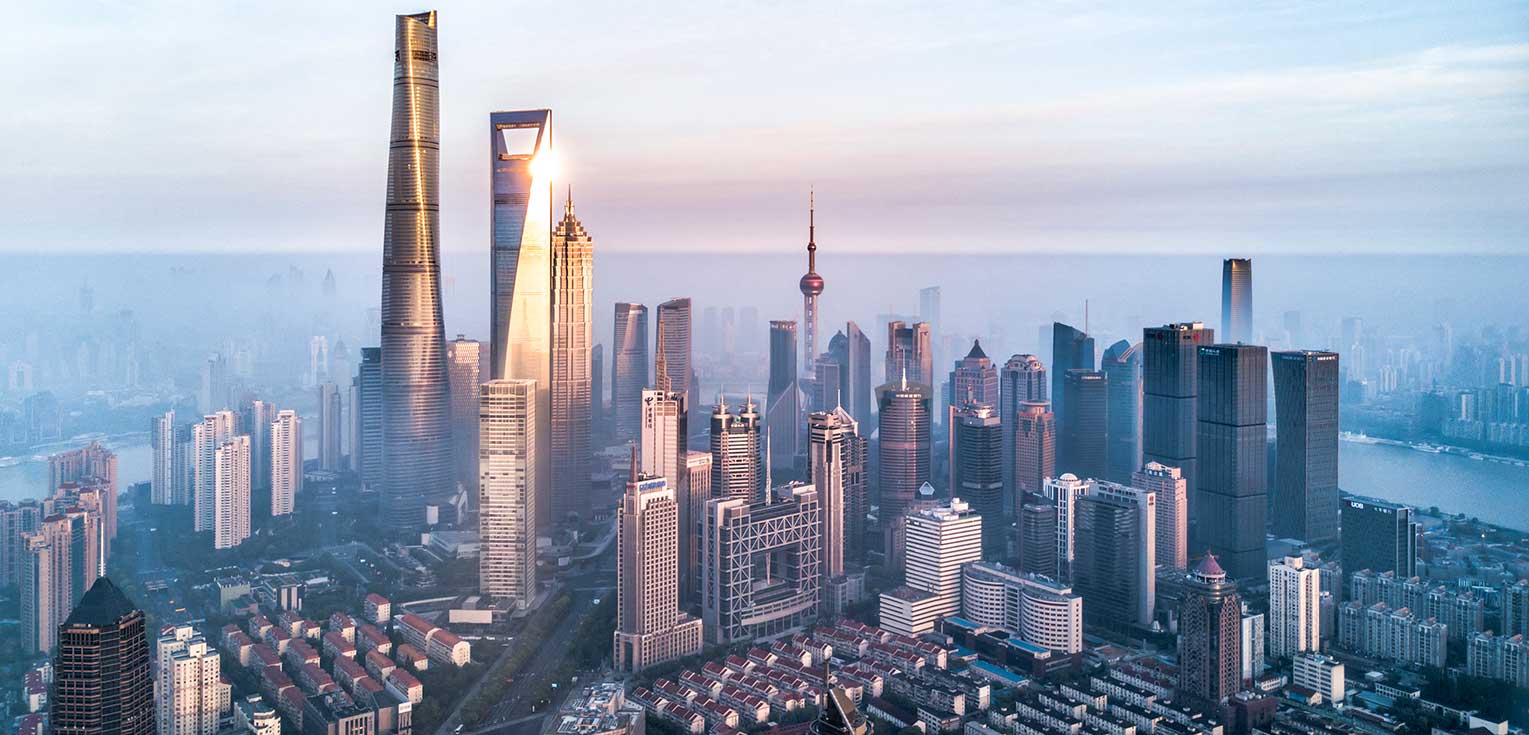
- Global Research
- General Research Insights
Making a success of cities
It’s make-or-break for the next urban billion
Between 2023 and 2035, a billion more people across the world will live in cities; that’s 22% growth. A disproportionate share of this growth will come in the emerging world - with Southeast Asia and Africa contributing most to the continued rise of mega cities in the years to come. Kinshasa, a city that many people would be unable to locate on a map, is set to become the world’s 7th largest city by 2035 and typifies the changes likely to be seen in the global urban landscape.
1. The world’s urban population is likely to keep rising quickly
Urbanisation brings with it both opportunities and challenges. Typically, urbanisation comes as a result of greater opportunities, jobs and facilities in urban areas, drawing people from rural areas and growing cities. This is associated with a lift to productivity from so-called “agglomeration economies”.
But now, given the speed at which these lower-income cities are growing, the infrastructure cannot currently keep up. The lure of jobs or a better life continues to drive people from rural to urban areas – but in many economies that flow of people is too heavily concentrated on a handful of megacities which find it hard to keep up with the growing demands for transport, housing and jobs.
9. Poor access to public transport access is widespread across the emerging world
Changing this trend is likely to be difficult, with a pressing need to make sure investment in these big cities can keep up, but also to promote second and third tier cities that can pick up the urban population growth and make it more manageable. Such moves would come at an extraordinary cost that most governments are ill-equipped to afford.
As a result, we could see the next urban billion not live up to their potential and that urbanisation becomes more of a curse than an opportunity. Cities may be unable to house or employ their swelling numbers of inhabitants.
This focus on mega cities isn’t just an emerging market problem. For Kinshasa, read London: a mega city taking growth and investment from elsewhere, leaving other urban areas behind and creating inequality challenges across the economy. We can see the models that have worked well in the west, and how these could translate into similar growth stories in the emerging world. For now, however, they are few and far between.
27. Some urban areas get left behind due to too much focus on one city
But in the UK or elsewhere across the developed world where urban growth is so heavily concentrated in one area, finding solutions may be easier. More remote work and more prevalent spread of internet connectivity may make it easier to bridge these gaps over the medium term. But, still, lots more spending is needed to join up these smaller cities and make them highly functional places for millions of people to live, work and play.
This matters because each year the world is leaving huge amounts of growth on the sidelines because of badly-designed or badly-connected urban areas. The World Bank estimates that the world needs to spend at least USD4.5trn per year on urban infrastructure to prepare us for the future. But finding this money isn’t so easy, and without it we could see the world’s cities not live up to their potential. That spending isn’t here at the moment and, unless something changes, we could see the challenges of urbanisation outweigh the positives, weighing on the growth potential in the fastest-growing parts of the global economy.
33. Lower levels of transport infrastructure means poorer cities
There is a bullish scenario, though, if this funding is found. It’s pressing that it is – from governments, development banks, green bond markets or public-private partnerships – and this could spark a lift in spending, productivity and growth the world over. However, for now, we’re on the wrong path, and cities across the world are going to need much more investment in the coming years to get back on the right track.
Would you like to find out more? Click here* to read the full report (you must be a subscriber to HSBC Global Research).
To find out more about HSBC Global Research or to become a subscriber email us at AskResearch@hsbc.com


